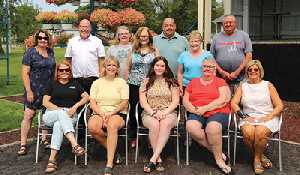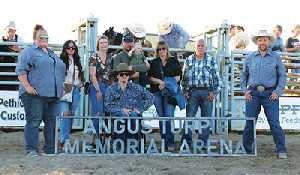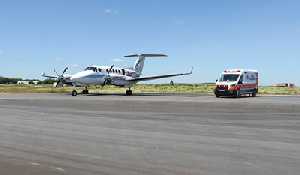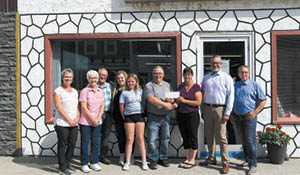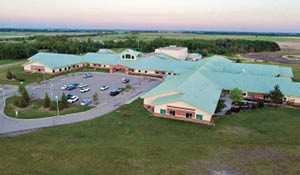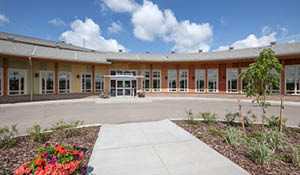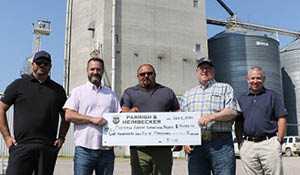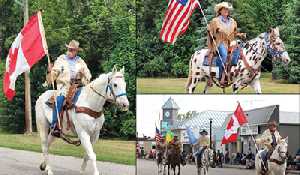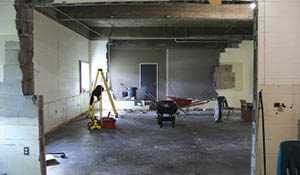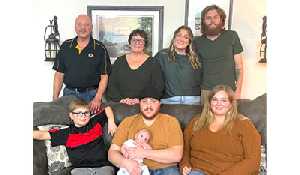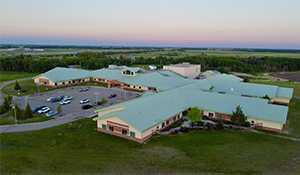Community builder Doug Griffiths will be coming to Moosomin on March 22
March 1, 2023, 5:00 pm
Sierra D'Souza Butts
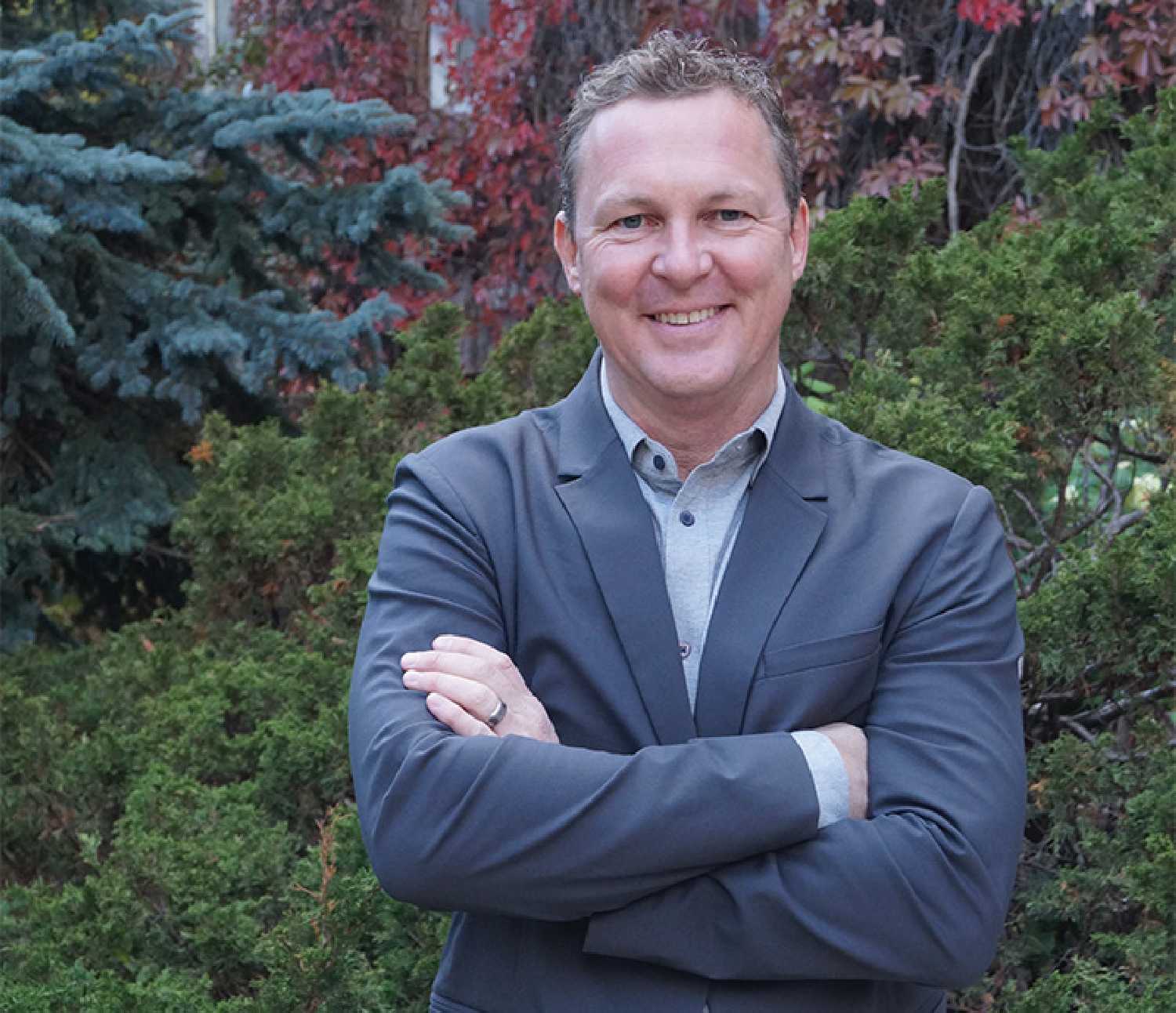

Best-selling author of 13 Ways to Kill your Community and former Alberta MLA Doug Griffiths will be speaking in Moosomin on Wednesday, March 22 to talk about collaborating and working together with surrounding communities to support overall regional collaboration, and economic growth.
The event will begin at 6:30 p.m. at the Moosomin Conexus Convention Centre. Prices for early bird tickets are $20 until March 8, afterwards tickets will be selling for $30. Tickets are available at https://www.eventbrite.ca/e/collaboration-cooperation-and-the-future-of-communities-moosomin-tickets-518908779127
“I’ll be sharing, like I always do, stories about when collaboration doesn’t work and a lot of stories about the importance of collaboration between businesses, between businesses and chambers, between the chambers and local government and industry,” said Griffiths.
“I’ll be sharing stories about where communities fall down and also success stories. I do often relate a story about two towns and a county working on a regional economic development strategy where I gave a bit of a presentation about the need for regional collaboration to be successful. After I finished, one of the gentlemen from the county said ‘Doug, you said we’re friends and that we need to work together, but you’re wrong. They’re not our friends in town, they’re our enemies, they want our money so they can build more sidewalks in town, put a pool, do more street lights, they’re not our friends.’ Then another guy from the county stood up and said, ‘but doesn’t your mom live in town?’
“The actual title of the presentation I’ll be doing is: I’ve seen the enemy and it’s my mom. I’ve described that (attitude) as the plague of the 21st century when it comes to municipalities, which is the fear of losing your autonomy, your identity and your power.
“I’ve actually been in places where a regional collaboration framework is being signed so that they can work together, share resources for economic development, have a marketing strategy, to dealing with other things like housing, which is a huge issue all over North America right now.
“I have had to deal with people who openly say things like, ‘I heard if we sign this deal they’re going to take our town sign down, they’re going to take the history books out of our library because we won’t exist anymore.’ It’s sort of the conspiratorial mindset. I have seen that a lot, it is a thing that holds municipalities back from achieving success probably more so than anything else.”
Last year alone, Griffiths visited over 522 communities where he gave presentations and spoke to representatives about community collaboration.
One of the key points to how municipalities can work together with their neighboring communities is building a relationship with one another, Griffiths said.
“You’ve got to start, I always say, with beer and burgers,” he said.
“You’ve got to build a relationship, too many municipalities start off with trying to sign a formal agreement when they don’t really have a relationship between their administrations or between their publics or between their councils, and you’ve got to build that relationship of trust (first).
“It’s a little like approaching getting married, you don’t start with the proposal you start with a date and seeing if you’re compatible and what you can work together on.
“Then another significant milestone is we usually encourage municipalities to pursue is a common ground document.
“A lot of municipalities will start off with, ‘we don’t need to work together we’re just fine’ or, ‘we’re already doing everything we need to do.’ They don’t spend enough time finding out if they have issues that they’re both dealing with or how they both want more economic development, so all of them end up focusing on payroll and administrative stuff that there’s no money (left) to do economic development or marketing.
“The mindset is that you need to start with common ground to find common ways to work together instead of fighting for scraps from the table. As a small municipality you’re going to take seat at the table, you’re going to grow the pie instead of fighting over the little pieces that you hope you can attract.
“No municipality has the resources available or necessary to do all of this stuff by themselves. You need to work with your neighbors because we’re not competing against each other anymore, we’re competing against other regions that have learned to work together.”
With Moosomin having groups in town that focus on working together as a community, such as the Community Builders Alliance (CBA), Moosomin Chamber of Commerce, the town and the RM, Griffiths said the community is on the right path.
“I’m looking forward to learning more about what you guys are doing in Moosomin because we have a podcast that we do about our success and in progress stories,” he said.
“They’re specifically for all of those people who say ‘that won’t work and it can’t happen’ so we show them an example of where it is working.”
As excited as he is to come to Moosomin, Griffiths spoke about how the idea for him presenting in Moosomin came about.
“(Community Futures) and I will call once and a while. We spend some time talking about issues and what the next steps are and where to go,” said Griffiths.
“I always tell people I’m not a lawyer, I don’t charge by the hour, if you have any questions give us a call. We talked about a regional collaboration, we talked about how the world is changing in the future, we talked about strategic planning, we talked about a lot of different areas, and they said they thought regional collaboration would be a good point to come talk about in Moosomin.
“I’m definitely going to talk about the next steps and the new things that Moosomin can do that you may not have gotten to yet, but it will also reaffirm that you are on the right path and how important the work that the community’s doing, is.”
Five factors that attract businesses to small communities
Based on his findings from visiting and speaking to representatives from small communities, Griffiths spoke about the five main factors for what attracts businesses to come to smaller communities.
“From my Google Maps, every month it tells me how many places I’ve been to and I like to share that on social media. It said in 2022 I’ve been to over 522 communities in the 365 days of the year which is insane,” he said.
“I spend a lot of time talking to state representatives, provincial representatives, economic development folks, at gatherings. I knew this was true, but it really came down to be much more formalized that if we think what attracts business is low taxes, but out of the five big factors that bring businesses, that’s number five. Low taxes are fifth.
“What comes in fourth is infrastructure such as rails, road, runways, airports, access to markets.
“Third is housing and workforce, they go hand-in-hand because if you don’t have housing then you can’t attract the workforce, and if you can’t attract the workforce then you don’t need to address housing issues. They are tied together, we simply explain to people that the more diversified your housing is, the more diversified the workforce is.
“A lot of communities are still trying to build the four bedroom, two bathroom, two car garage housing, when there’s a lot of younger people that don’t want to own a house, they don’t necessarily want that size of a house, they’re not ready to have a family, they may never want to have a family and they’re looking for different housing, so you want to diversify workforce and you want to diversify housing.”
“Number two is quality of life which has always been a swimming pool, walking trails, but it’s actually just as connected to the businesses you have in the community too,” said Griffiths.
“If you don’t have enough restaurants then people start to leave town to go out and try new foods and money leaves with them. Businesses are just like newspapers, they are just as much a service as they are a business.
“They are so intertwined now that they all contribute to quality of life, but what was interesting was number one which was collaboration and co-operation.
“I had site selectors and governments tell me that they actually send people into town meetings, to school board meetings, and if there isn’t a regional collaboration they’re not going to invest there.
“One person summed it up perfectly, she said if you don’t have regional collaboration then work your way back down the list, but if you can’t build a quality of life, you can’t deal with housing and attract a workforce. Then you can’t deal with the infrastructure needs like railroads, runway and air, and taxes maybe low, that’s a good factor, but they might be low and eventually go up as your community continues to die.
“I found it fascinating that taxes are not the stimulus that drives the economy, low taxes are the result of a successful economy.
“For the last 50 years we’ve said lower taxes and businesses will show up, but it’s actually the other way around. When businesses show up you can actually lower taxes because it deals with collaboration, quality of life, housing, workforce and infrastructure issues then the rest will take care of itself.
“Someone told me a long time ago that if you do what you love and you do it really well then you can make money, but if you try to make money, then you’re not focused on doing it really well.
“It’s the same focus we have in our business, that’s why I tell people I’m here to help and we make money, but I don’t start off with how I’m going to make money and then figure out how I can help, but do what you love and the money follows.”
Treat what ails them
Griffiths said that the most important aspect of collaboration all depends on the community and people you are working with.
He made the connection of treating the condition of neurosis with how communities can work together to achieve economic development.
“Some day I’m going to finish this book and maybe this year, it’s called the Neurosis of Communities. We treat people for neurosis such as depression, anxiety, addiction, we treat them for stuff like that and it’s why I do this,” said Griffiths.
“I get so frustrated with consultants that come in to do a strategic plan, and walk away from a community when we haven’t treated what really ails them, we haven’t helped them move forward.
“The biggest way for a community to move forward on collaboration is to figure out what kind of mindset is holding us back, is it fear, is it a lack of autonomy, is it the desperation to maintain control, is it a hatred because someone hip checked someone else back in 1922 in a hockey game? So, moving forward first requires asking the big question, ‘why don’t we already do this together? What’s holding us back?’
“There isn’t exactly one prescription, which is why I always recommend beer and burgers, or breakfast and Bloody Mary’s whichever people prefer, but without an agenda, without trying to sign a contract to actually figure out what’s holding you back, because when you find out what’s holding you back and you can strip that away, then you can start to move forward by building the relationship and figuring out that common ground, about the things that you need to work on together and how you can be successful.
“I guess if I was trying to put a positive spin on it, if there was one thing to do, it is to recognize that no one has enough resources to do everything, not even the biggest city in the world.
“It’s also recognizing that you’re stronger when you’re working together by reinforcing your individual identity. Being a former minister of municipal affairs in Alberta I always use the capital region of Edmonton as an example. They always call themselves the capital region and when I was minister I said, you have to do something about this because I pulled up Google and Googled capital region and the Edmonton capital region came up on page 4. I told them that if you want to bury a dead body go to page 2 of Google because no one goes to page 2, it’s always page 1. I said why don’t you change it to the Edmonton Metropolitan region? They said no because Edmonton would get everything, except not everyone wants to live or do business in Edmonton.
“If they changed it to Edmonton it would actually show up in the search engine, and then they could highlight how living in Beaumont is a different type of lifestyle with different people than it is in Sherwood Park which is different than St. Albert. They’ve changed their name, finally, to the Edmonton Metropolitan Board and they celebrate what makes each of those different communities distinct.
“I’m doing another project in Manitoba, a rural one, and they must have seven different villages—two they call them cities, but they’re both under 20,000 people—and a regional municipality. They’re finally starting to recognize that it’s what makes each of those places unique that makes them stronger as a whole because anyone who goes to that region now can find a place that suits their lifestyle.
“The fear that if we work together we’ll lose our identity is exactly the opposite. Most communities are refusing to work together for the fear of losing their identity and then that’s when they go broke. Then someone comes in and takes down the town sign and no one cares about the history books because they get lost.
“You need to work together to be successful.”
Why should people attend the presentation?
Griffiths said he hopes to see people from different backgrounds come out to the presentation on March 22 at the Moosomin Conexus Convention Centre.
“I hope the elected officials come out, I hope administrations come out,” he said.
“I also hope that regional economic development will come out. I know Community Futures will be there, but I hope the Moosomin Chamber of Commerce will come out too.
“I also hope a lot of members from the public come to recognize the opportunities that are there because the hardest part about moving forward, generally and it’s every aspect of what we do with communities, is you need the public to buy in and understand how they’re going to benefit from it.
“Most of the time we’re so busy with our day-to-day lives we say whatever until an agreement gets signed, then someone says ‘see, they’re going to take down the town sign and burn our history books because now we’re going to be one big regional municipality.’ The only way to overcome those sorts of fears where there’s a backing of information is to get people out to hear what’s possible, and fill that vacuum where there’s no information with some really creative, positive ideas that will get people excited about.
“I hope the school boards come, I hope anyone from the health authority comes. If you’re going to keep your school full, you need families, and in order to have families you need parents who have jobs, parents who have housing, parents who have business opportunities.
“The school board should be just as concerned about economic development, businesses being profitable, and attracting new immigrants and newcomers as much as anyone else is because that helps with their viability.
“It’s that way with every single piece of the community. The curling club should be concerned about how they’re going to work with their neighbors so that their curling club remains viable as they attract new people to the region. It would be easier for me to list people who shouldn’t come and listen to this presentation.”
Griffiths was asked what he hopes people take away from his presentation.
“I hope people take away energy and excitement, and say I’m really glad Moosomin and the region are working well together because this bodes well for us,” he said.
“As well as listen, so that two months from now if someone says we’re going to lose something through collaboration, they know enough then to say ‘no that’s not true. We need to work together and we’re going to be better for it.’”
How Griffiths became a speaker and consultant
Based on his experience from teaching, writing and being in politics, Griffiths spoke about how he got into the career of consulting.
“I shot my mouth off too many times,” he said laughing.
“I was a junior high school teacher, and I made enough money to keep buying more cattle and horses then I complained about the need for rural development for the province.
“Then our MLA resigned and everyone said I should run, so I did. I wound up in politics, and wrote a rural development strategy, I applied community building to everything for eight years. I ran for the leadership of the party, lost, but they made me minister of municipal affairs.
“When I resigned, I wrote my first book in 2010, the second book in 2016 and people just started asking me to come and speak so I tell them the stories.
“When I resigned from politics I was so busy speaking that people asked if I could help, now I do consulting with communities and now I get to finish one of the three books I have going.
“I love what I do. I get to do what I am most passionate about. I’ve been talking about rural community building for 30 years now, and I get to actually work on it. I get to help people and move communities forward, I just think I have the greatest job on earth.”

